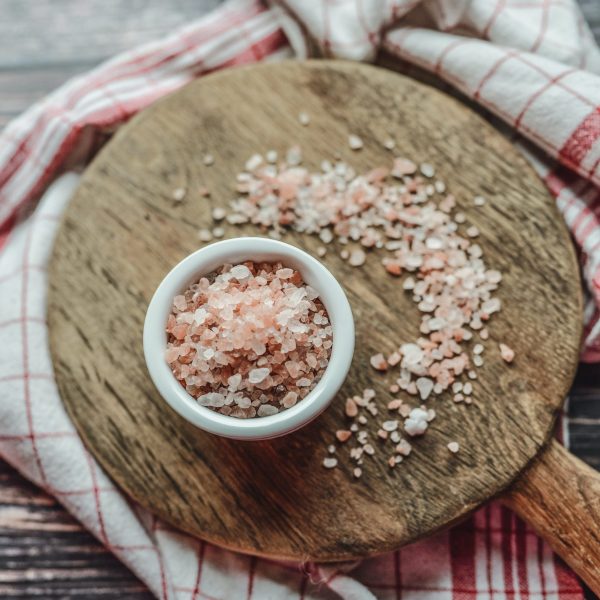Iodine is a chemical element in your diet that I venture a guess few people think about unless they see a box of “iodized salt”. It is recognized that iodine is important for the health of your thyroid gland but did you know that your ovaries need iodine, too? In fact, the ovaries have the second highest iodine concentration in your body (behind the thyroid gland itself). This means that, without enough iodine, the health of your ovaries can suffer. This becomes particularly troublesome for women whose ovarian function is already compromised as is often the case with PCOS or polycystic ovary syndrome.
What is PCOS?
PCOS is a fertility health issue where a woman can experience menstrual irregularities, high levels of androgens (male hormones) in the body causing excessive hair growth and trouble conceiving naturally. Many women with PCOS also have multiple cysts on their ovaries, weight management issues and problems controlling their blood sugar. No one knows exactly what causes PCOS but the incidence of PCOS has increased over the past several decades.
Is Iodine Deficiency an “Old Problem”?
Iodine deficiency used to be a bigger problem than it is now because salt has been supplemented with iodine. But, does that mean there isn’t a risk of iodine deficiency anymore? Not at all! People who don’t eat much salt, who eat produce grown in iodine-depleted soil, or who don’t consume iodized salt are at a higher risk for iodine deficiency.
The incidence of iodine deficiency in the US has been found to be about 10 percent according to 2003 data from the Department of Nutrition for Health and Development, World Health Organization (WHO). While that percentage seems low, even in places where iodized salt is prevalent deficiency still exists. Something you may not know is that even if you consume iodized salt the iodine gradually leaches out of the box. So, unless you buy new boxes of iodized salt regularly, the “iodized salt” you think you’re eating might not contain an adequate amount of iodine.
Iodine deficiency has been found to lead to an increase in cyst formation in a woman’s body. There is evidence that deficiency is linked to fibrocystic breast disease, cysts in the thyroid gland, and cysts in the ovaries, shares Jorge D. Flechas, M.D. for Optimox in his article Orthoiodosupplementation in a Primary Care Practice.
Iodine and PCOS: the relationship
There are no large research studies indicating an absolute connection between low iodine and PCOS but some doctors have anecdotally found that iodine supplements have helped women with PCOS improve their PCOS symptoms. That’s good news for women who have PCOS because it means that, by simply increasing your iodine intake, you might be improving your ovarian health – especially if you have PCOS.
How to Get more Iodine in your Diet
How much iodine is enough and how can you get more? Iodized salt is a good start. A serving of “fresh” iodized salt (about a quarter teaspoon) contains 45 percent of the recommended daily intake of iodine 5. Foods that are high in iodine that can be included in a PCOS Fertility Diet include:
- iodized table salt, sea salt or Himalayan Crystal Salt
- seaweed – Kelp, Dulce, Nori, Arame, Hiziki, Kombu, and Wakame
- salt-water fish – Cod, Sea Bass, Haddock and Perch
- cage-free pasture-raised eggs
- navy beans
- whole food multivitamins that contain iodine – Fertile Woman One Daily
The recommended daily allowance of iodine for women is about 150 micrograms, according to the National Institutes of Health. There are also iodine supplements, with nascent iodine being one of the more bioavailable sources of the element.
In conclusion…
Do your ovaries a favor and make sure you’re getting enough iodine in your diet. While science hasn’t proven that iodine deficiency is the underlying cause of PCOS (yet), if you have PCOS and think you might be iodine deficient, take care of your ovaries by taking an iodine supplement or by taking in iodine-rich foods.
- Olsen, t. (May 3, 2018 ). Signs and Symptoms of Polycystic Ovary Syndrome. Retrieved from: https://intermountainhealthcare.org/blogs/topics/live-well/2018/05/signs-and-symptoms-of-polycystic-ovary-syndrome/
- De Benoist B, et al. (2003 Nov 29). Prevalence of iodine deficiency worldwide. Lancet. 362(9398):1859-60. Retrieved from: https://www.who.int/vmnis/publications/articles/en/
- Biber FZ, Unak P, Yurt F. (2002 Jun). Stability of iodine content in iodized salt. Isotopes Environ Health Stud. 38(2):87-93. Retrieved from: https://www.ncbi.nlm.nih.gov/pubmed/12219985
- Flechas JD. (n.d.) Iodine Study #10: Orthoiodosupplementation in a Primary Care Practice. Optimox. Retrieved from: https://www.optimox.com/iodine-study-10
- Iodine Deficiency. Retrieved from: https://www.thyroid.org/iodine-deficiency/
- Torborg L. (n.d.) Mayo Clinic Q and A: Sea salt and sufficient iodine intake. Retrieved from: https://newsnetwork.mayoclinic.org/discussion/mayo-clinic-q-and-a-sea-salt-and-sufficient-iodine-intake/
- Iodine. Retrieved from: https://ods.od.nih.gov/factsheets/Iodine-Consumer/





